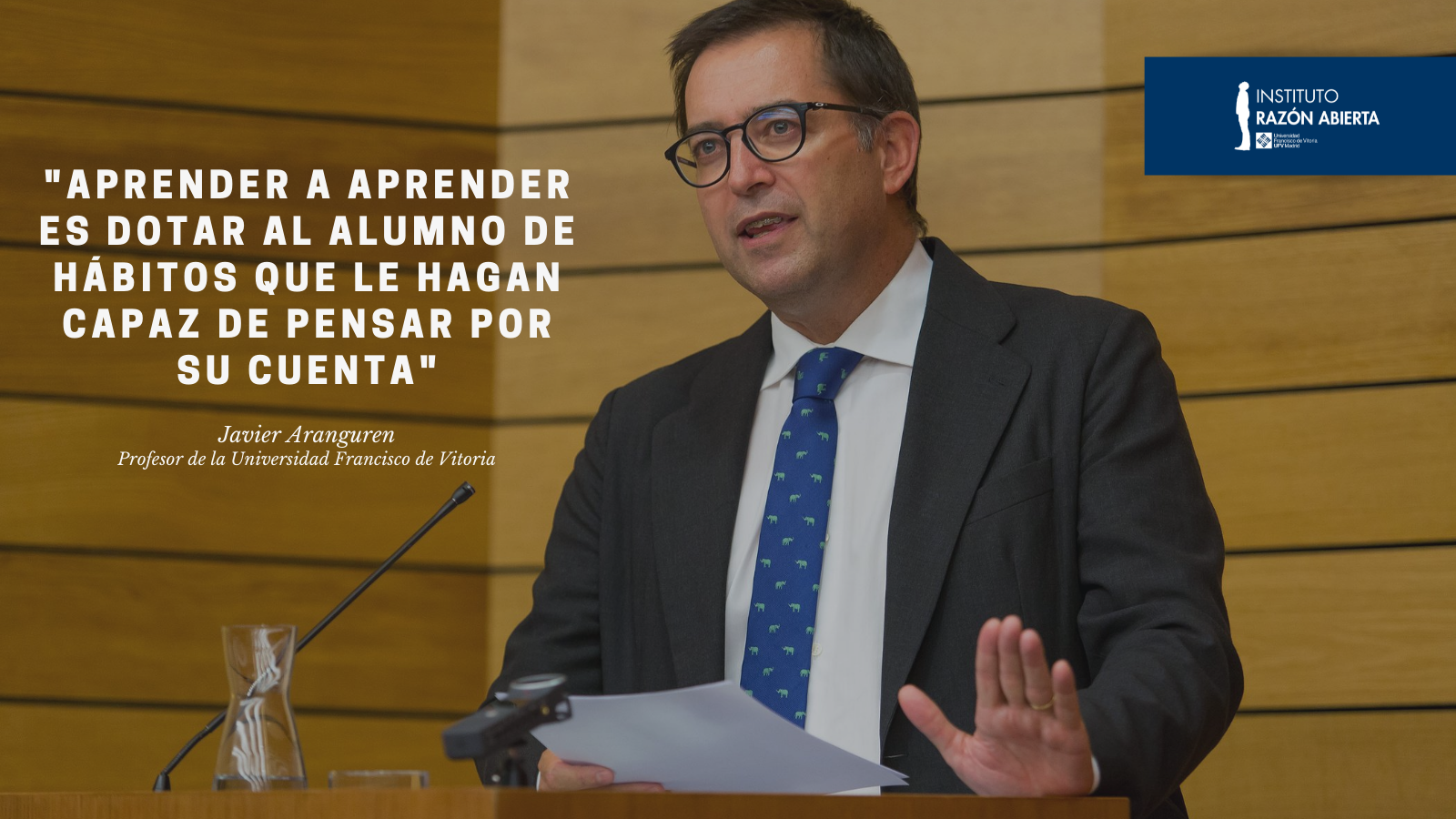Listen to the full interview here:
A recent article in the cultural analysis website “Nueva Revista” leads us to the essay “The lost tools of learnign” written by the British author Dorothy Leigh Sayers in the 1940s, translated and with an introductory study by Javier Aranguren, professor at the University Francisco de Vitoria.
One of the main ideas of the author is to propose a return to the ‘Trivium’ in the classroom, that is, to recover what the three subjects of grammar, logic and rhetoric contribute to the entry and exit of knowledge, and also as a learning method to teach students to think.
In her book, “The Lost Tools of Learning,” Dorothy L. Sayers seeks to relate learning, not so much to content or activities, but to tools or baggage of habits with which to equip the learner to be able to think, act and decide on his or her own.

This has to do with how we learn in order to achieve an authentic transformation of society beyond the university environment. And this learning about learning is something that the author seeks, even if she is not entirely convinced, as Javier Aranguren considers: “Dorothy does not focus so much on the student having certain dynamisms, but on him acquiring concrete knowledge and reading great books such as the works of Aristotle from the age of 15. It is a learning to learn set on the shoulders of giants, not about nothingness for the student to build on, but about difficult questions that they have to face in order to find truth”. It is not, therefore, a matter of confronting content and creativity, but of the latter emerging from confronting more arduous issues. She is an advocate, for example, of Latin and mathematics as subjects that build intellectual seriousness and encourage the use of intelligence in a logical way, something that, in her opinion, fails in modern pedagogies.
Stimulating reason to explore the frontiers of the sciences is what leads Dorothy Sayers to write this book, in a complex sociopolitical context of World War II, in which the population had a high rate of education, but was paradoxically dragged down by propaganda and manipulated by advertising: “When ‘Learning and Working’ was written there was an educated civilization, but with hardly any education, citizens were passive subjects, subjected to instruction, and Dorothy Sayers sought to promote the ‘liberal arts’, that is, learning as a source of beauty that also makes you free,” specifies Javier Aranguren.
The author also devotes part of the book to explaining the attitude that a good teacher should have, who, as F. Nembrini wrote in “The Art of Educating”, needs more positivity and certainties than content, that is, to teach subjects that in turn teach how to get out of them: “A teacher is the one who facilitates the student’s encounter with a long tradition, with his or her own potential for creativity, with his or her confidence of intelligence. Often educating can be repeating, a game without rules, but for this author it is very important to cultivate dialectics, which, on the other hand, is something very medieval”.
Precisely in the Medieval Age, when universities were born, intellectuals based their learning on discussion, there were many open spaces for dialogue, Thomas Aquinas summoned to the discussion all the wise men of his time and of the past, and education was to seek confrontation in conversation through argument. This is the dream of Britishness, starting from basic tools: first, repeat, then take the student by the hand to learn how to learn for themselves. As one of Aranguren’s masters, the philosopher Leonardo Polo, said, to accompany the student to grow until he is able to argue for himself, without repeating socially correct positions, but being the source and origin of his ideas. “Probably these ideas have to do with the search for truth,” qualifies Professor Aranguren, “but that they are his own does not necessarily indicate that they are subjective, but that he has authentically encountered them.”
Dorothy L. Sayers, Chesterton’s great friend and author of mystery novels, “was quite a character”, as he describes her, “to whom we owe the unfinished translation of Dante and, without doubt, she is one of the Oxford university women of the 1920s who published the most interesting things”.


No comment